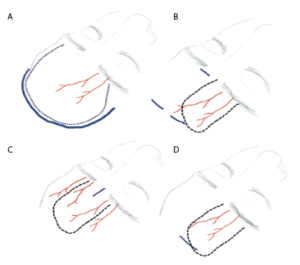Figure 1. The pericranial flap evolution. A) Bicoronal incision. B) Zanation approach, performing two incisions in the scalp and one in the glabella. C) Single-port approach, through a unique incision in the glabella. D) Single port hidden in the scalp, avoiding any visible scar.
Figure 1. The pericranial flap evolution. A) Bicoronal incision. B) Zanation approach, performing two incisions in the scalp and one in the glabella. C) Single-port approach, through a unique incision in the glabella. D) Single port hidden in the scalp, avoiding any visible scar.
ENTtoday - https://www.enttoday.org/article/how-to-hidden-port-approach-to-endoscopic-pericranial-scalp-flap-for-anterior-skull-base-reconstruction/screen-shot-2021-08-16-at-12-39-12-pm/
